MACRO OCTOBER IN MARLERA - Episode Six - 11TH OF OCTOBER 2023
There's nothing special about the 11th of October this year. It was an ordinary Wednesday, very similar to the Tuesday that came before it and almost identical to the Thursday that followed.
I spent a couple of hours in Marlera, the coastal area a couple of kilometers from the village of Liznjan and about five or six kilometers from where I live, and now, I'm gonna show you some insects & plants I photographed there. You'll see one spider too.
This is the Osyris alba, a semiparasitic plant that derives some of the needed nutrients from the surrounding vegetation. On one of its twigs ...
... I found the only spider of this post. It was a small, juvenile Gibbaranea bituberculata, a species from the Araneidae family.
This grasshopper, the Chorthippus brunneus was resting on some dry herbaceous plant very close to the Osyris alba shrubs. In the following, non-macro photograph ...
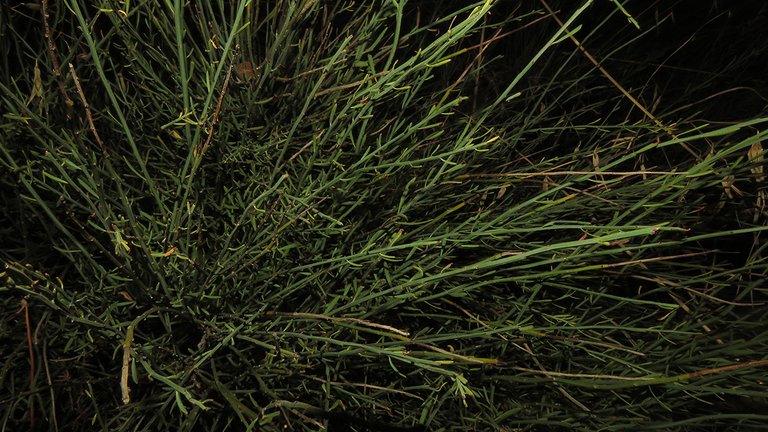
... you can take a look at the entire plant that in Marlera grows attached to the root system of the cypress trees.

This lovely caterpillar...
... was found and photographed among the leaves of the Plantago lanceolata plant. In the following triptych ...
... you can see another caterpillar of the same kind chewing a leaf of the same plant.
I came a bit closer in this shot.
When it comes to the name of the species, I can tell you that this is the larval stage of the Melitaea didyma, a butterfly from the Nymphalidae family.
It looks a bit like some colorful sea cucumber when seen through the macro lens.
In this photograph, the focus is on the Melitaea didyma caterpillar in the foreground, while blurred in the background, you can see a Pezotettix giornae
grasshopper resting on the leaf of grass.

On one of the Plantago lanceolata flowerheads ...
... I noticed four minuscule flowers.

The other Plantago lanceolata plants I saw that day didn't have them.
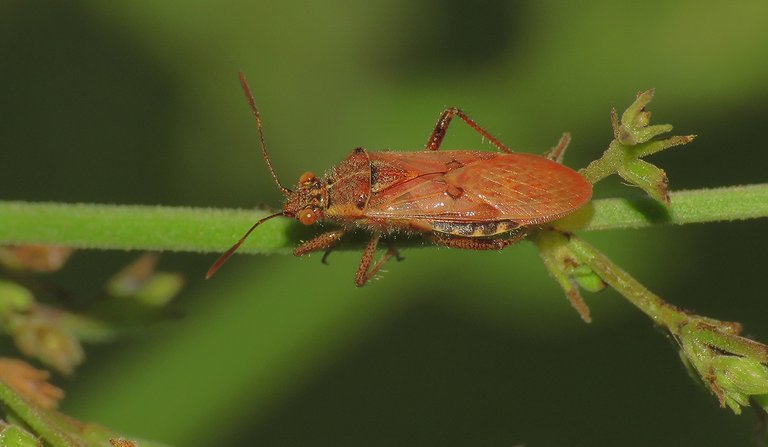
On one of the nearby plants, can't tell you what plant it was, I photographed this bug from the Rhopalidae family.
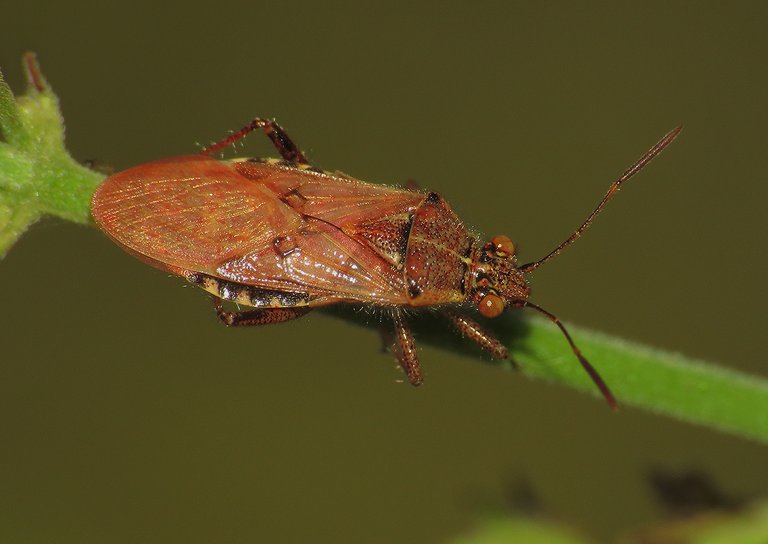
After searching the Internet for hours, I still can't tell you the name of the species. I found only two photographs of this insect on some Spanish pages. That's all. No name. No information about the bug's lifestyle or biology. Fortunately, the Insect's appearance, its external anatomy, told me that it belongs to the Rhopalidae family. There is no doubt about it. Getting these two photographs was more exciting than one may think because I have never seen this species before.

On the tiny Foeniculum vulgare plant, I photographed a wasp from the Ichneumonidae family that was feeding on the tiny flowers. With many very similar-looking Ichneumonidae species around, I can't tell you which one exactly is this. Could be the Diaglyptidea conformis. Or the Aoplus ochropis. Or something else from that family. In the following photograph ...
... especially if you enlarge the picture by clicking on it, you can see another small wasp besides the one I just said a few words about. I wasn't aware of the presence of the tiny second insect in the scene. When it comes to this second species, I can tell you even less than I was able to say about the first one. It surely belongs to one of the fifty or so families from the Chalcidoidea superfamily.
Here you can see a leafhopper resting on the ear of the Sorghum halepense grass. The name of the species is Balclutha frontalis.

I also photographed a few Sitobion avenae aphids on the same grass. Here you can see a winged one sucking the fluids of the plant. In the following photograph ...
... you can see a group of wingless individuals of the same species accompanied by the Hippodamia variegata ladybeetle that feeds on them when is time to get a meal.
This is the nymph of the Lygus pratensis bug. The species belongs to the Miridae family.
The sunset was almost there when I came across the moth shown in this and the following photograph. Because of its color, the insect wasn't well pronounced against the background provided by the evening sun that was fairly rapidly sinking behind the horizon. After a minute or so, this moth from the Pterophoridae family flew away.
Less than a minute later, and five or six meters further, I photographed the same moth again. I'm not sure about the species. The wings look a lot like those of the Emmelina monodactyla but the body, especially the abdomen is much thicker, so who knows what we have here.
This is the last insect I photographed on the 11th of October.
I came closer in this shot. The position of the moth's antennae is really cool. The following photograph ...
... was taken from a different angle, and the moth has changed its pose at this point. I don't know what species is this. I don't know what family it belongs to. Maybe I could find out that information if I put myself through a tedious Internet search that can last for hours. I won't do that, no chance. It's late at night and I'm exhausted. I'm too old for this shit, people. The following link can take you to a very good website with most of the European Lepidoptera so you can do your own research if you wish.
https://www.leps.it/
After another change of pose, I took these two shots. In the one on the right, I used the flash of my camera. In the left one, the moth was photographed in the ambient light.
In this set of four photographs, I was playing with light and the backgrounds.
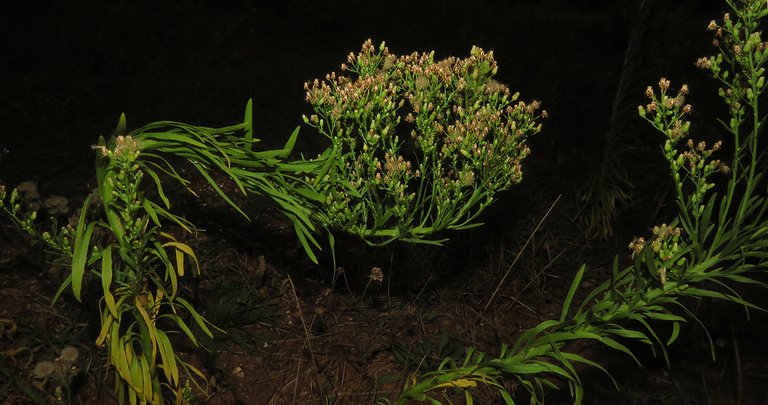
Here you can see the Erigeron bonariensis plant.
One of the two plants shown in this last shot was twisted in an interesting way. It looked like the Erigeron bonariensis was bowing for the audience at the end of the show.
AND THAT'S FINALLY IT. AS ALWAYS HERE ON HIVE, THE PHOTOGRAPHS ARE MY WORK - THE END.
The following links will take you to the sites with more information about some of the protagonists of this post. I found some stuff about them there.
https://en.wikipedia.org/wiki/Erigeron_bonariensis
https://en.wikipedia.org/wiki/Pterophoridae
https://en.wikipedia.org/wiki/Lygus_pratensis
https://en.wikipedia.org/wiki/Sitobion_avenae
https://www.inaturalist.org/taxa/775647-Balclutha-frontalis
https://en.wikipedia.org/wiki/Melitaea_didyma
https://en.wikipedia.org/wiki/Osyris_alba
https://en.wikipedia.org/wiki/Gibbaranea_bituberculata


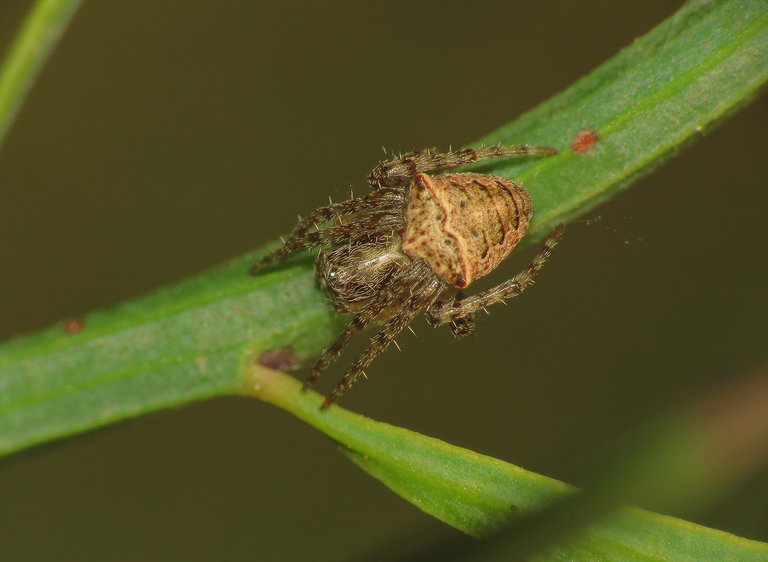
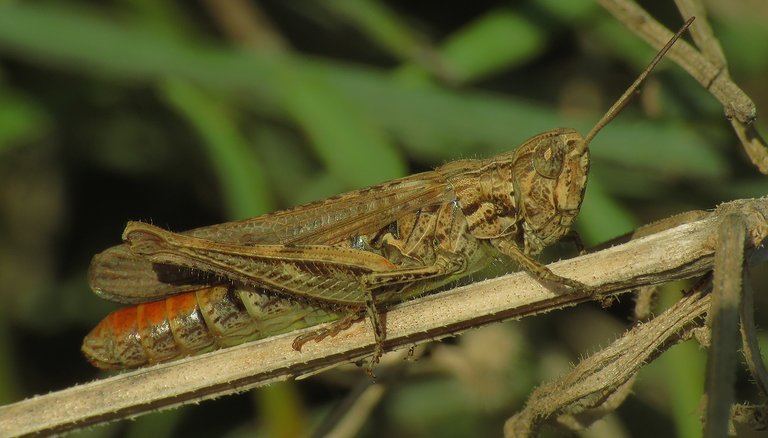

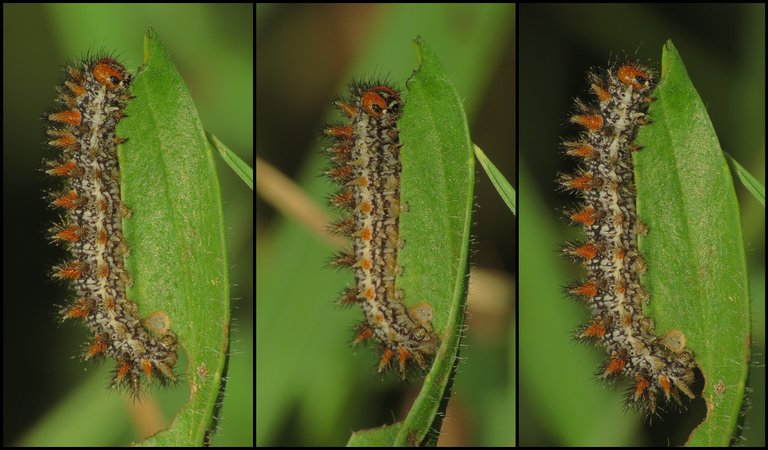
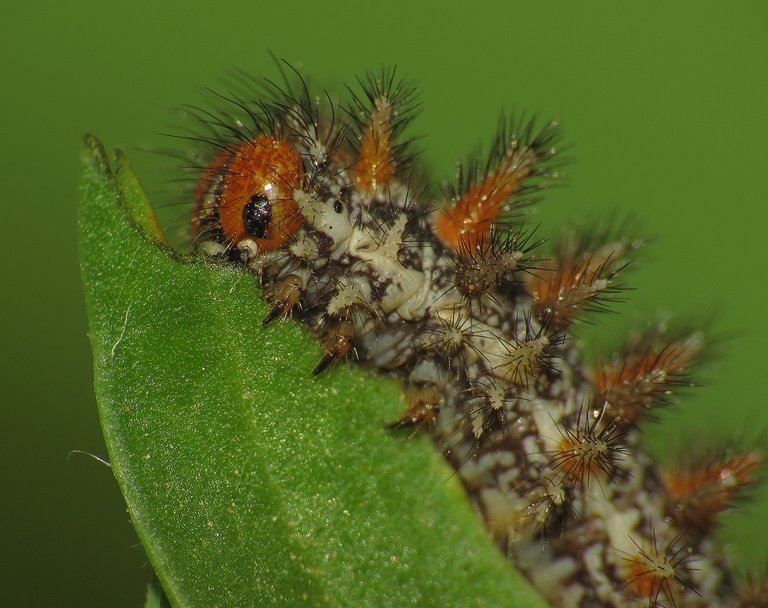
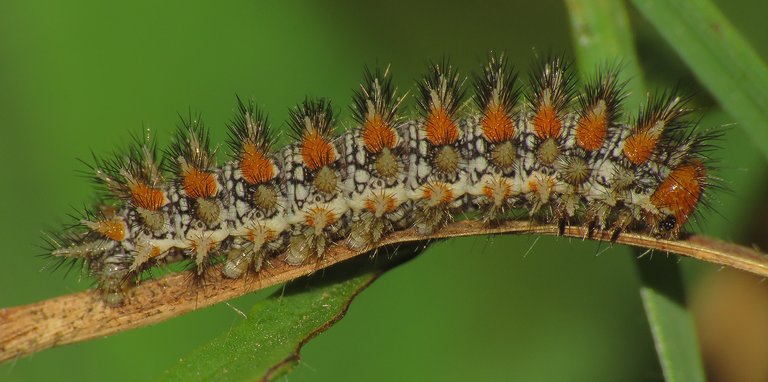

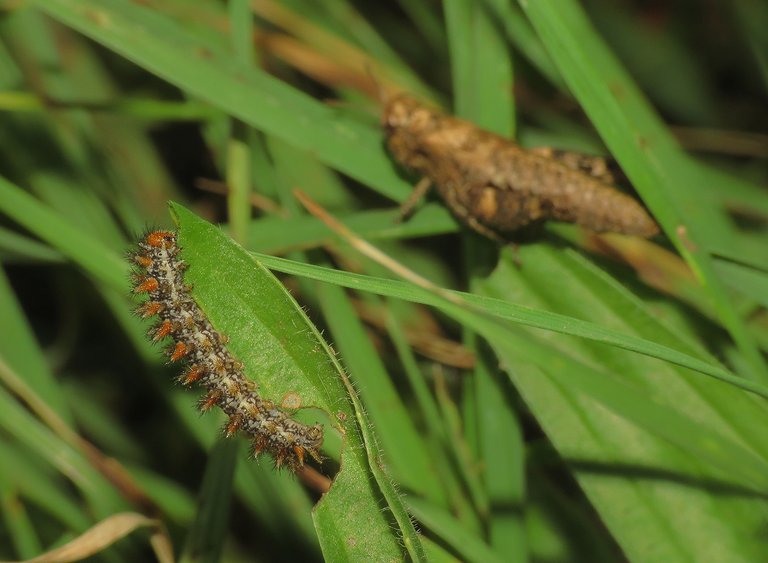
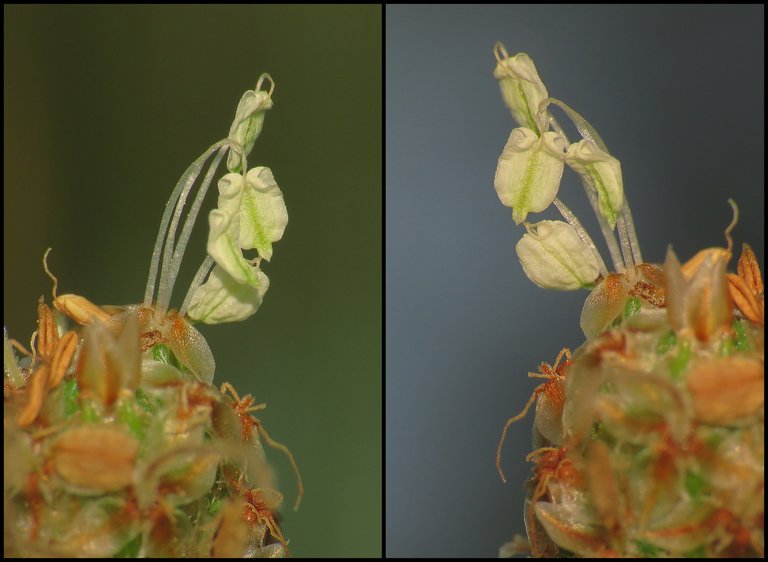
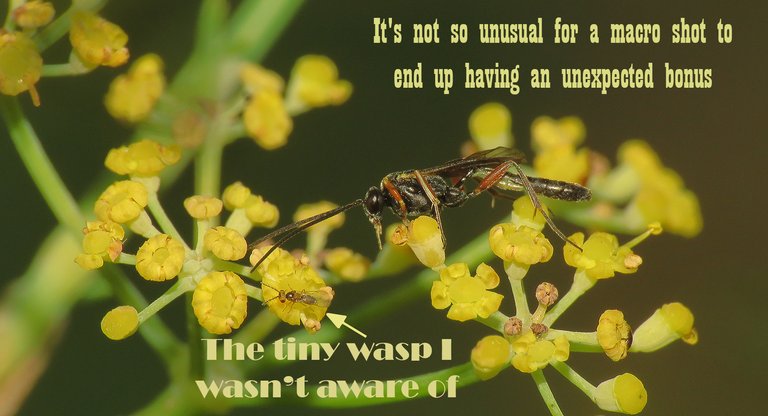
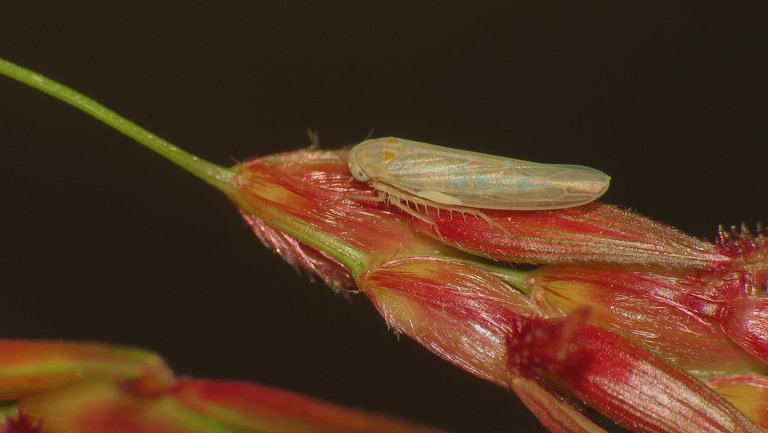
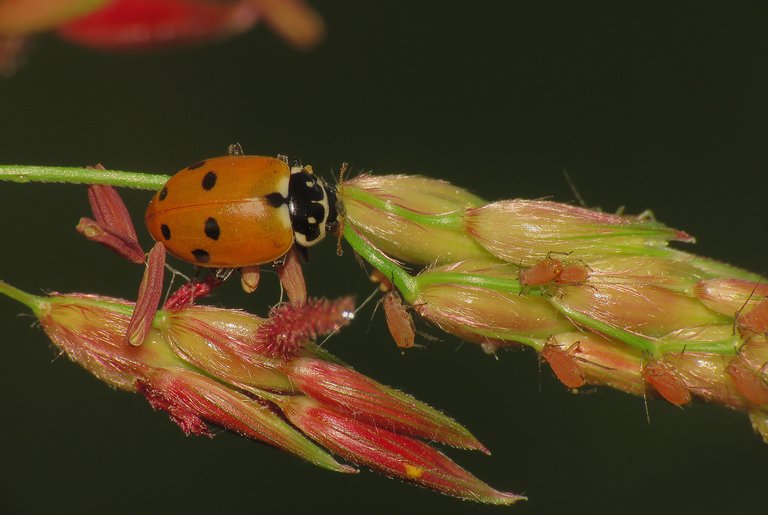
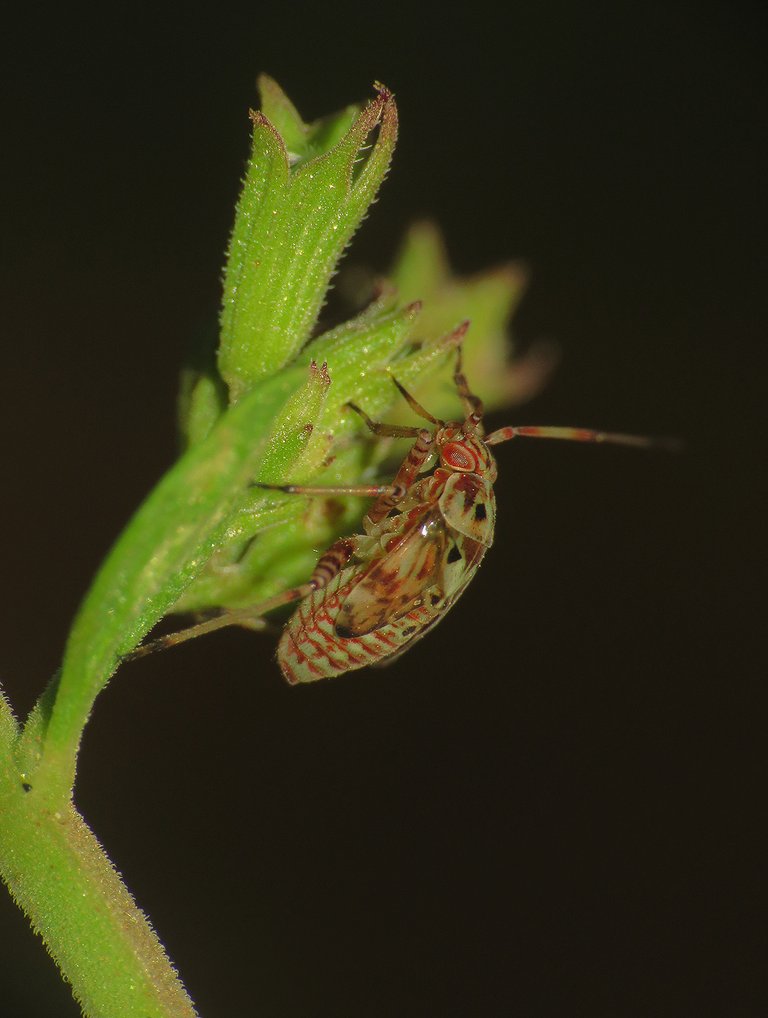
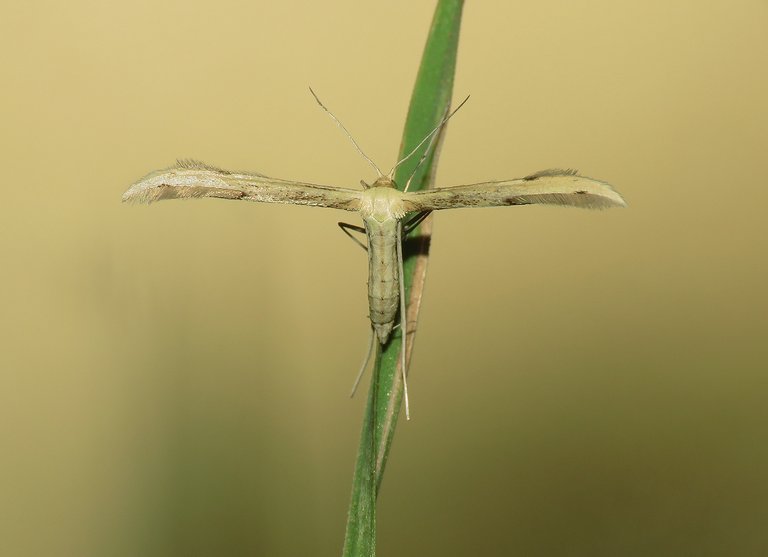

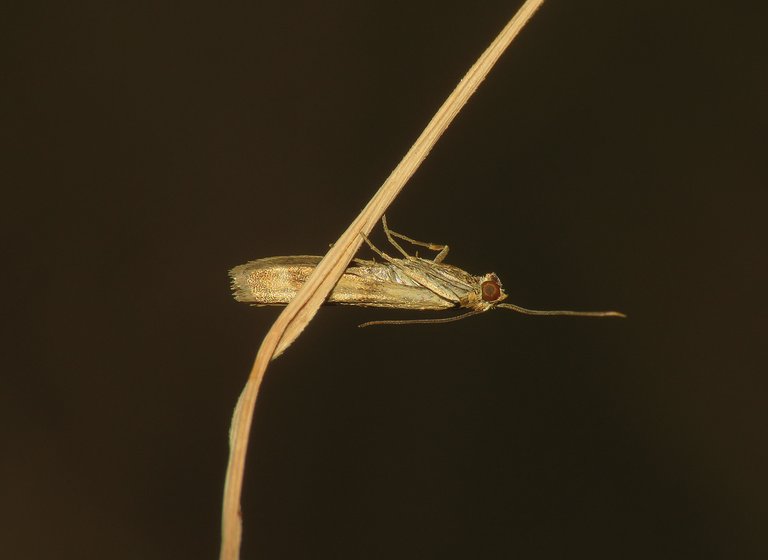
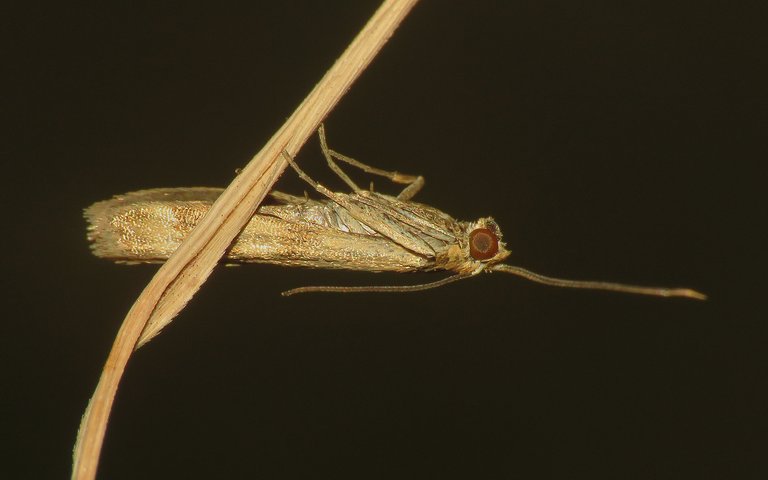
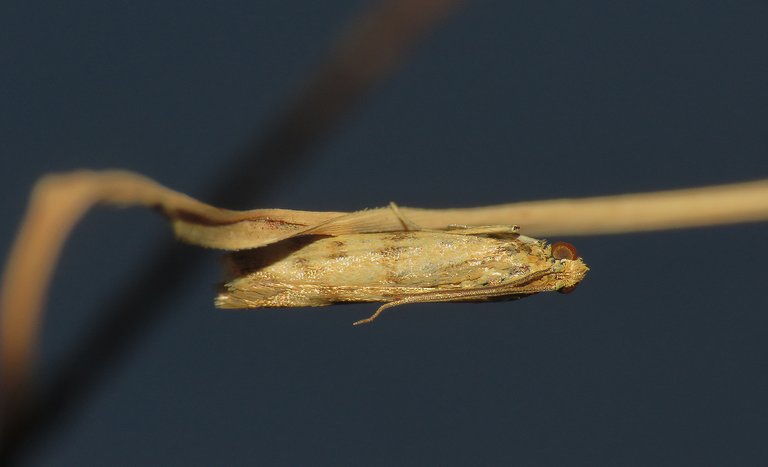

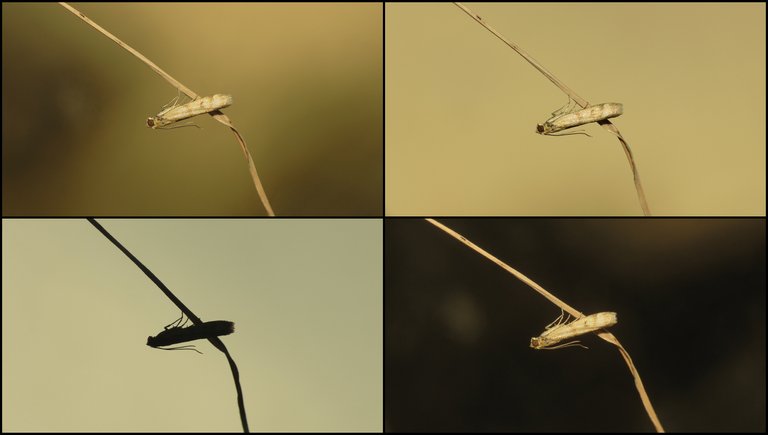

You're fairly handy with that camera. Some great shots here, you've a good eye for detail
Ya the macro stuff is cool
You are the master of insects, that there are such beautiful little animals!
😀 You are exaggerating in the first half of the sentence, but the second half is completely realistic and true. 😂
Your photography turned the 11th of October into a special day mate <3 you have captured the insects that are not easy to see from the naked eye. you are perfect in it. Lepidoptera looks smart but active species.
Want to Know more about Hivepakistan?
Ping Us On Hive Pakistan Discord server
To support HivePakistan, delegate Hive Power to hivepakistan and earn 90% curation reward :)
Here are some handy links for delegation
A delegation of 500 or more HP makes you earn Hivepakistan supporter badge.
You're welcome
Yet more fascinating photo insights into the wonders of Nature. A Moth that looks like a religious "cross" symbol is something that I find most intriguing. ✝
Have a great day Borjan and continue staying !ALIVE
!LOLZ !VSC 👌
@borjan! You Are Alive so I just staked 0.1 $ALIVE to your account on behalf of @ fun.farms. (1/10)
The tip has been paid for by the We Are Alive Tribe through the earnings on @alive.chat, feel free to swing by our daily chat any time you want, plus you can win Hive Power (2x 50 HP) and Alive Power (2x 500 AP) delegations (4 weeks), and Ecency Points (4x 50 EP), in our chat every day.

lolztoken.com
To get his quarterback.
Credit: reddit
@borjan, I sent you an $LOLZ on behalf of fun.farms
(1/10)
Farm LOLZ tokens when you Delegate Hive or Hive Tokens.
Click to delegate: 10 - 20 - 50 - 100 HP
Of all the insects, caterpillar is the one that makes my hair stand 🤣. Don't know why I fear that little create 🤣
😃 I heard quite a few people say that are scared by worms and caterpillars ... or more like repelled not so much scared. There must be something in their shape that makes one's hair stand. 😂 Fortunately, I regularly shave all my remaining hair so I don't have that hairstyle problem with caterpillars.
yo no diría maestro yo diría el amo y señor de los insectos mi amigo @borjan ...
Lady bug sitting on a flower is looking very pretty and flowers are looking also very showy. Beetle color is so attractive and caterpillar is no doubt, very lovely.
Plants at the end really twisted in interesting ways.
These insects are looking very attractive and showy because they are adapted towards their predator. To save themselves, they have colors similar to the flower.
I think there is nothing you don't know about insects
Hahaha
That's amazing
Nice pictures!
Thank you. I wish I knew everything about nature ... 😀 I wish the Internet knew more as well, so I could learn more ...

Been a while my friend, I miss reading to you. Been so busy that I've missed so many of your posts.
Your photographs are nice.
Thanks. 🙂 Glad to see you back. Have a great day.
Yeah mate, this beautiful photos made that 11th hour of October special and beautiful. I mean the photos are lovely.
Beautiful macros. That caterpillar got me scratching my skin. Lol
https://twitter.com/LovingGirlHive/status/1716006366102659182
https://twitter.com/lee19389/status/1716089122685604008
#hive #posh
I myself am very fond of taking pictures of such natural scenery and such natural things and I also go in the same way every day and I know that taking these pictures is not easy and takes a lot of time. Makes good pictures.
Yes, nature has plenty of interesting shapes and colors to offer. The natural world is a bit like a fantasy world. Strange flowers, little monsters, amazing animals, it's almost incredible that all this stuff is real.
Yeah I totally agree with you
Very beautiful shots borjan.
The flower looks like caterpillar.😀
I must say, Marlera is a good place for insects and capturing different species visiting the same place is no boring.
It's always a great choice to capture the beauty of nature. I like it most. Thanks for sharing